Affiliate links on Android Authority may earn us a commission. Learn more.
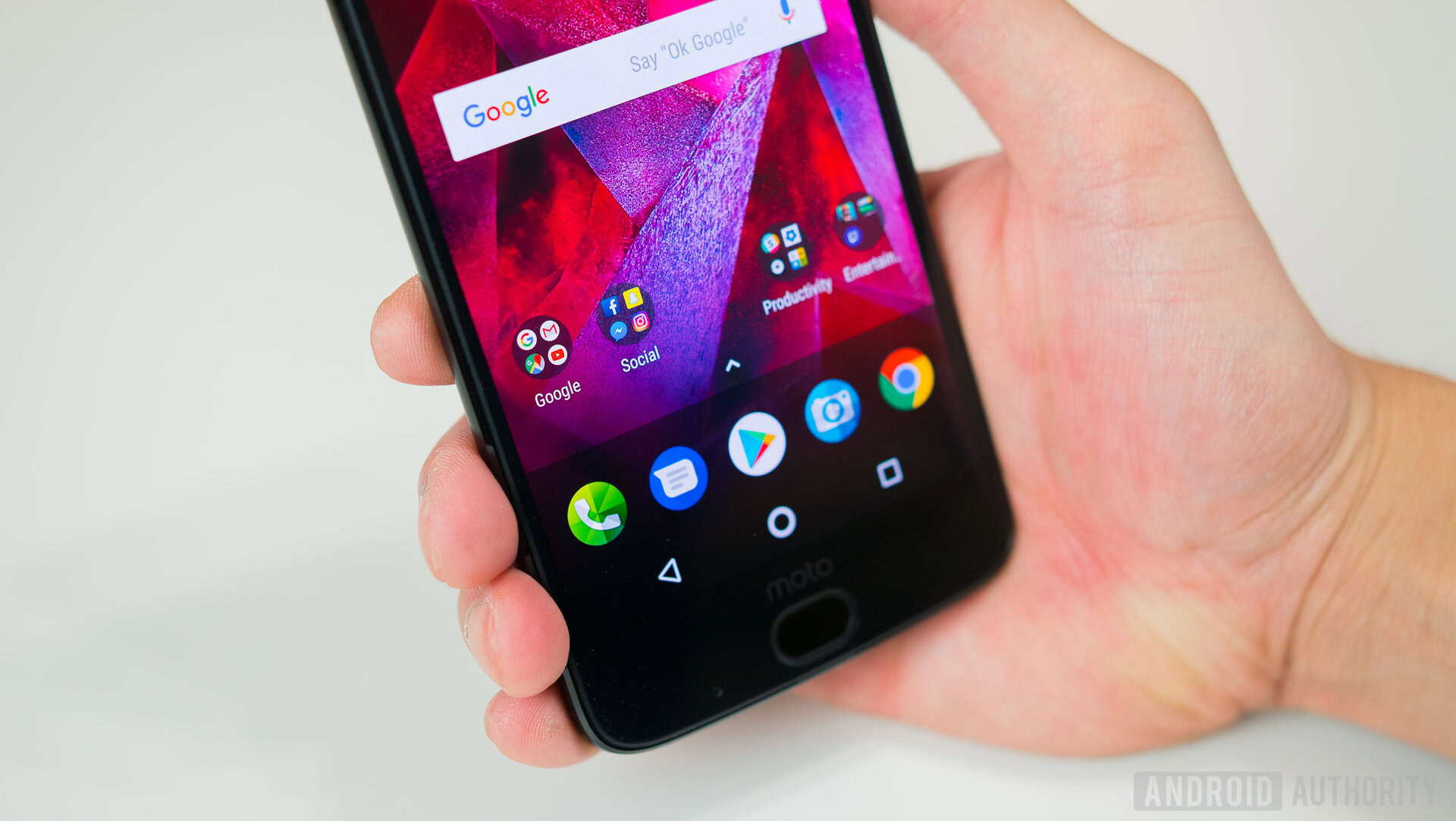
Moto Z2 Force review: A force to be reckoned with?
Published onAugust 7, 2017
Motorola Moto Z2 Force
What we like
What we don't like
Our scores
Motorola Moto Z2 Force
Last year Lenovo and Motorola introduced two flagship phones with Moto Z and Moto Z Force, but this year they’ve consolidated their lineup. There’s no Moto Z2, and instead we only have the Z2 Force as their main 2017 flagship. The Moto Z2 Force brings back the shatterproof display and some key changes that include a thinner body, dual cameras, new Moto Mod accessories and availability on all U.S. carriers in order to better compete with the likes of Samsung and LG.
However, not all of these changes are without compromises and the thinner body means the Z2 Force has a significantly smaller battery than last year’s model. Does Lenovo’s choice of form over function shatter the experience, or is the Z2 Force still a force to be reckoned with? Find out in our full Moto Z2 Force review!
Design
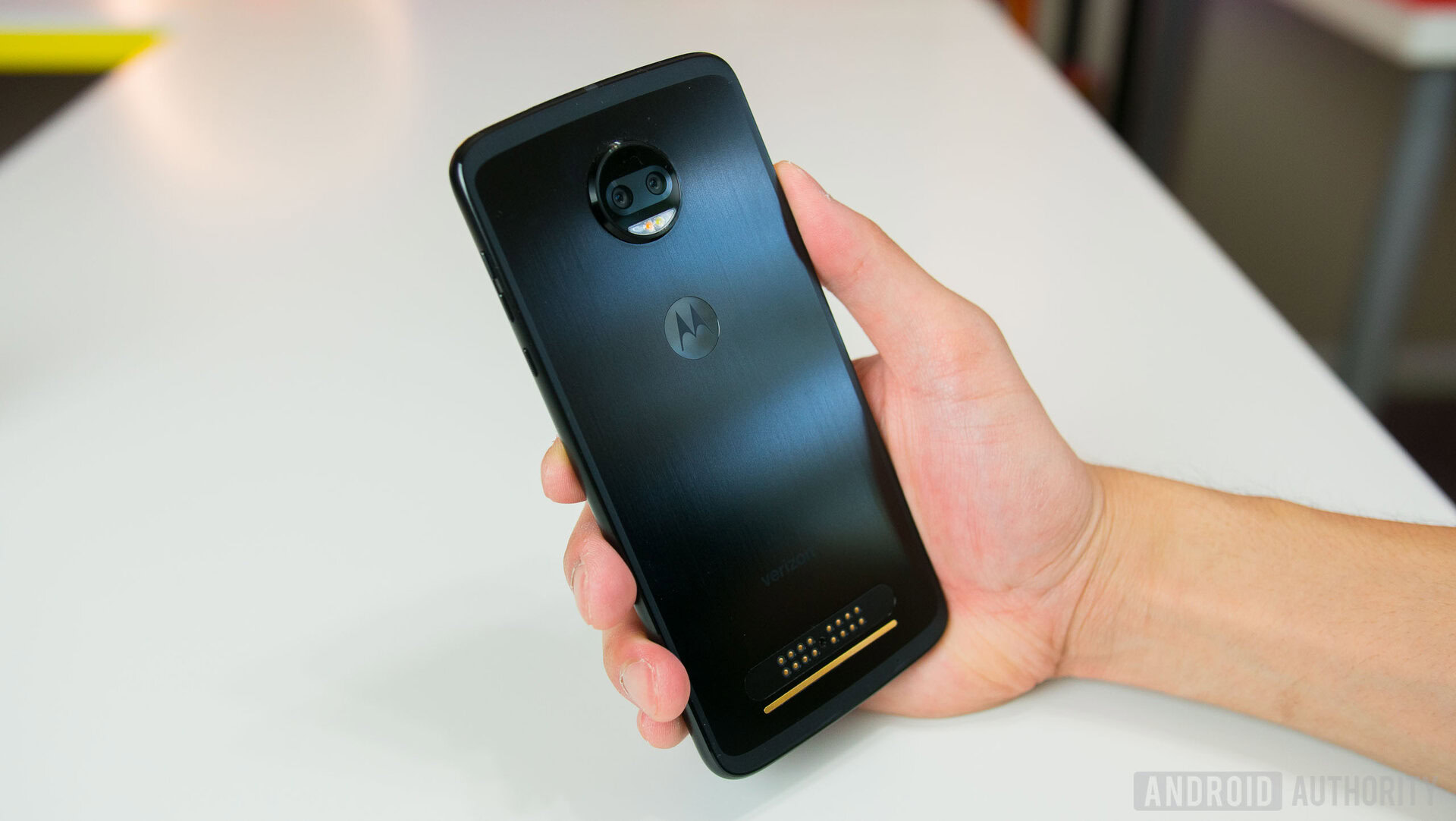
Due to compatibility with the Moto Mods, it’s no surprise that the overall design and shape of the Z2 Force has remained the same, but that doesn’t mean that there aren’t any notable changes. Motorola’s gotten rid of the rear glass inserts of last year’s Z Force in favor of an all metal unibody design that’s made from 7,000-series aluminum for extra toughness and durability. The rear panel has a hairline finish which doesn’t add any texture to the device, but it is an attractive look and a big improvement over the rear panel of the original Z Force.
The thinner body gives it a much sleeker feel in the hand but it doesn't come without sacrifice.
The most significant change to the Z2 Force’s design is that it’s roughly one millimeter thinner than its predecessor. If this story sounds familiar it’s because Lenovo did the same thing with the Z2 Play. The thinner body gives it a much sleeker feel in the hand but it doesn’t come without a sacrifice. That sacrifice, of course, is the battery, which we will get into, and we have to question if Lenovo’s obsession with making their devices thinner is a decision of form over function or if it’s merely just a ploy to sell more Moto Mods.
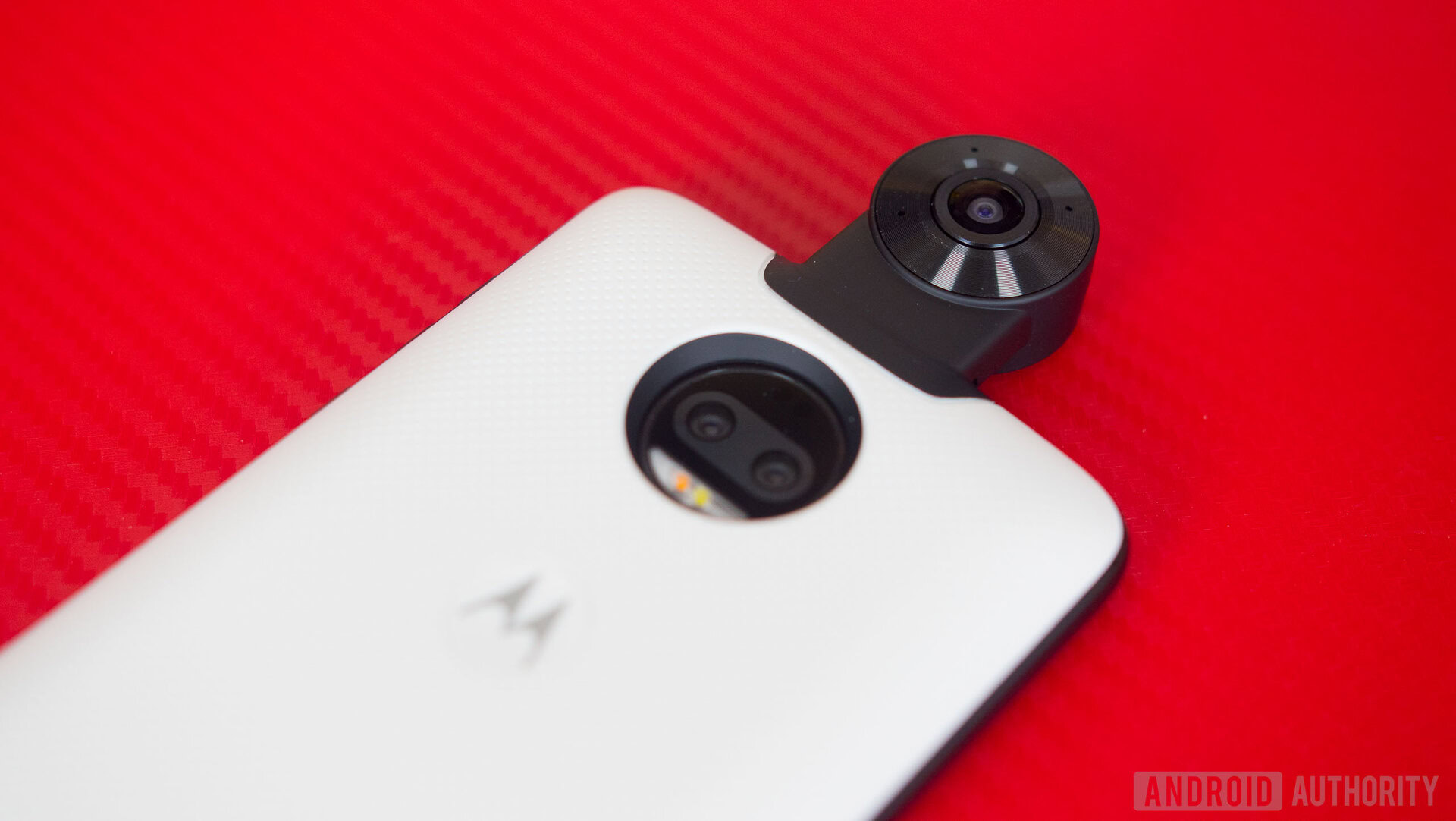
The release of the Z2 Force has also brought along some new Moto Mod accessories, with a new 360 degree camera and a gamepad that will add physical controls and buttons to your mobile gaming experience. Like all Moto Mods, these will fit Moto Z devices old and new for at least a few years, and the previous generation of Moto Mods are perfectly compatible with the Z2 Force.
Display
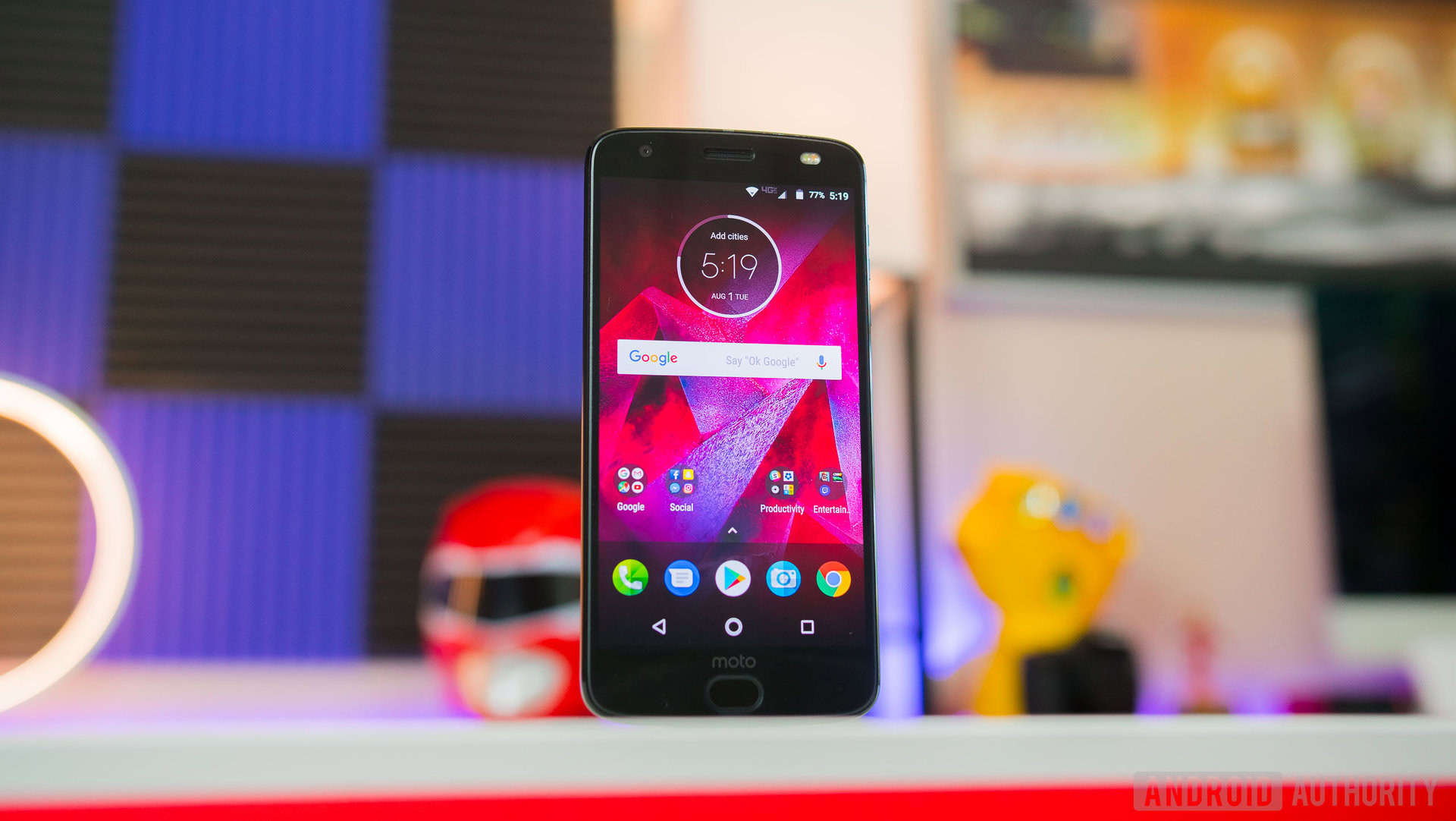
On the front, the Z2 Force comes with a 5.5-inch AMOLED display boasting a resolution of 2560 x 1440 that results in a pixel density of 535 ppi. The AMOLED screen brings all of the usual characteristics that you would expect like vibrant colors, deep dark blacks, and excellent contrast. The display works wonderfully for browsing the web, playing games, and watching videos. In most situations it looks fantastic, but it does become tough to read under direct sunlight.
In comparison to screens from the Galaxy S8 or LG G6, the Z2 Force’s display may not be nearly as eye catching, being surrounded by thicker bezels all around, but what makes this screen special is the Shattershield technology. This makes the screen completely shatterproof, which is great, but the technology behind it isn’t exactly as magically as you would hope.
The biggest downside to the shatterproof screen is it's no longer user replaceable.
The screen is essentially protected by a thick layer, or “lens” as Motorola likes to call it, of plastic. While it does do its job of preventing the screen from shattering, it’s much more prone to scratches, nicks, and dents, and during the week that I’ve had the Z2 Force the screen has already become filled with scratches. It’s not noticeable when the display is on but it’s fairly easy to see every little imperfection when the screen is turned off. The biggest downside to the shatterproof screen is it’s no longer user replaceable. You’ll either have to live with the scratches or resort to adding a screen protector since Motorola has discontinued the replacement service.
Performance
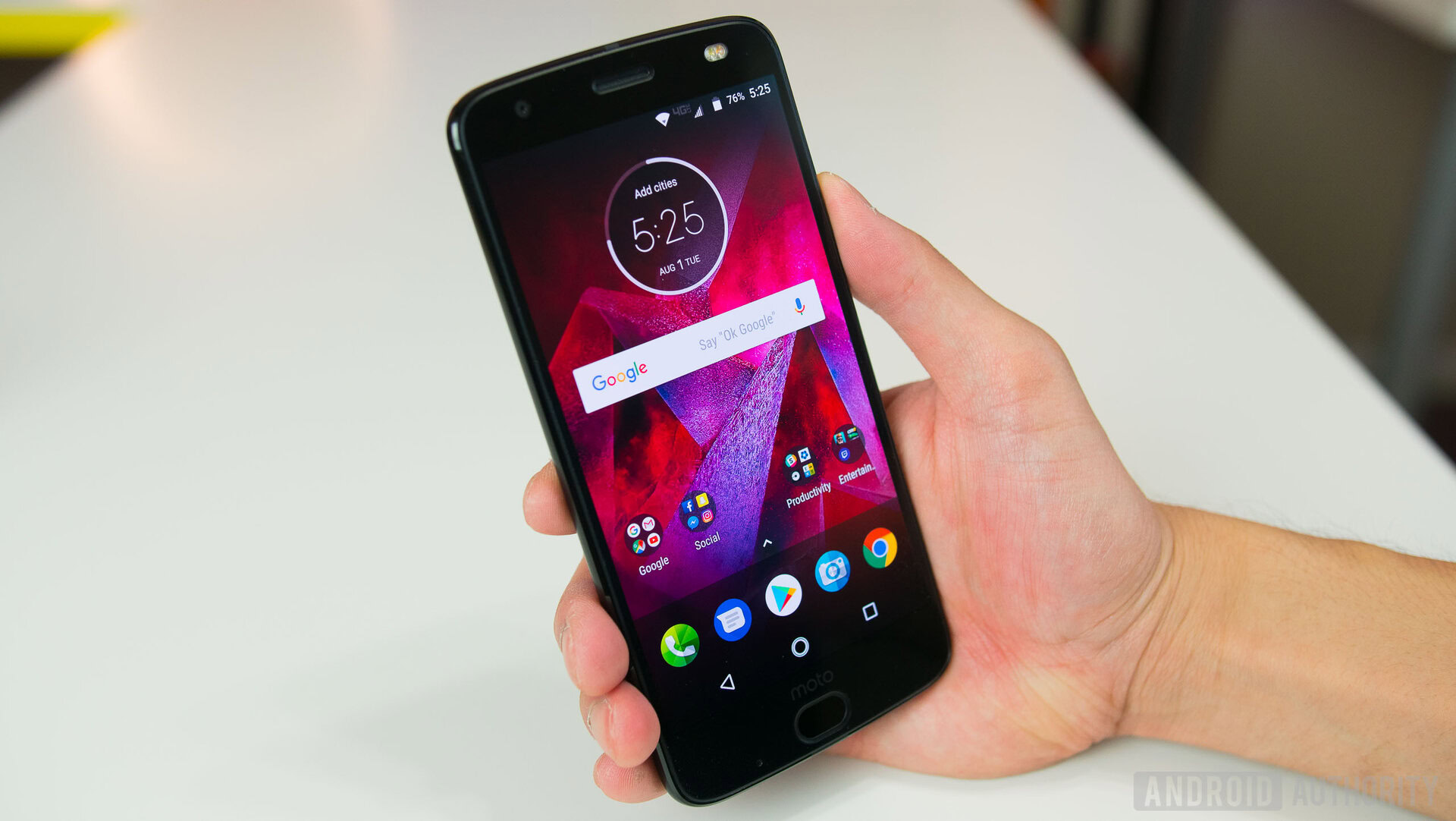
Inside, the Z2 Force is powered by your typical set of 2017 flagship specs. You’ll find the Qualcomm Snapdragon 835 running the show along with the Adreno 540 GPU, and four gigabytes of RAM.
Everyday performance is nothing short of expectation. The Z2 Force is fluid and responsive with fast app load times, smooth scrolling, and a seamless multitasking experience. Checking emails, browsing the web, and watching videos are all handled with ease and graphic intensive gaming is also an enjoyably smooth experience. Much of the phone’s snappiness and fluidity can be attributed to a combination of the fast processor and Motorola’s close to stock experience. The true test will be how the phone performs months down the road but for now the Z2 Force operates without any noticeable stutters or slowdowns.
Hardware
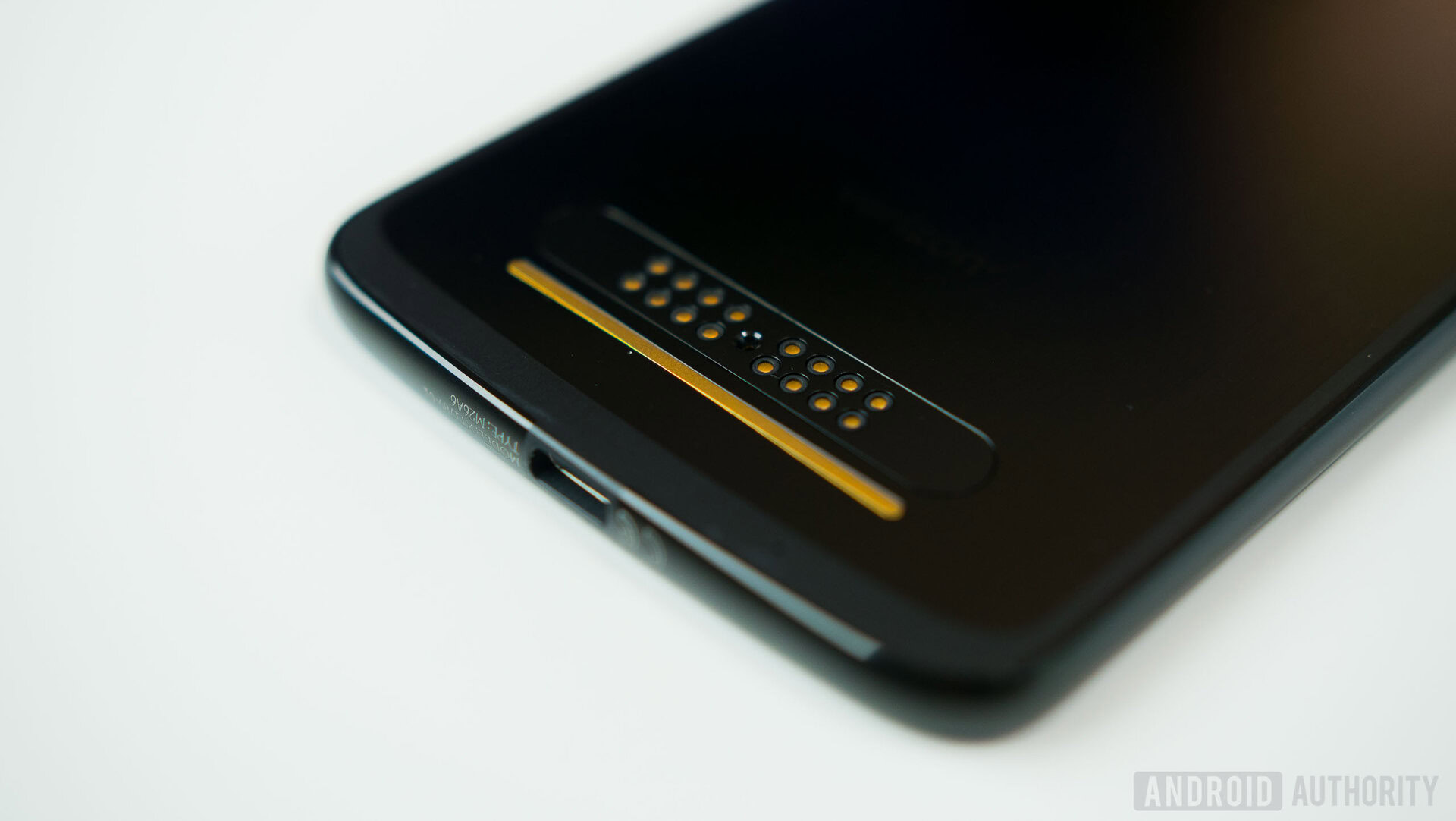
The Z2 Force comes in only one storage option at 64 GB but a microSD slot is available with support of up to 2 TB in case you need more than what the phone is able to offer internally. 4×4 MIMO is also on board for faster gigabit LTE speeds across carriers.
With such a hefty price tag and no official IP certification, it's only going to make it harder for the Z2 Force to compete.
Water and dust resistance has become a fairly common feature on flagship phones but that is one thing you will not find on the Z2 Force. It does however carry a water-repellent nano coating that makes the phone resistant to the occasional splash without being designed to survive submersion. With such a hefty price tag and no official IP certification, it’s only going to make it harder for the Z2 Force to compete.
As far as audio is concerned, the Z2 Force only comes with a single speaker embedded in the ear piece. The fact that it’s a front facing speaker is certainly a positive and the audio quality sounds good without any distortion even at max volume. However, due to there only being one speaker the audio experience sounds just as lopsided as it did on the Z2 Play, which featured the same speaker setup. Of course this is one of the Z2 Force’s shortcomings that could easily be remedied by using the JBL SoundBoost Moto Mod.
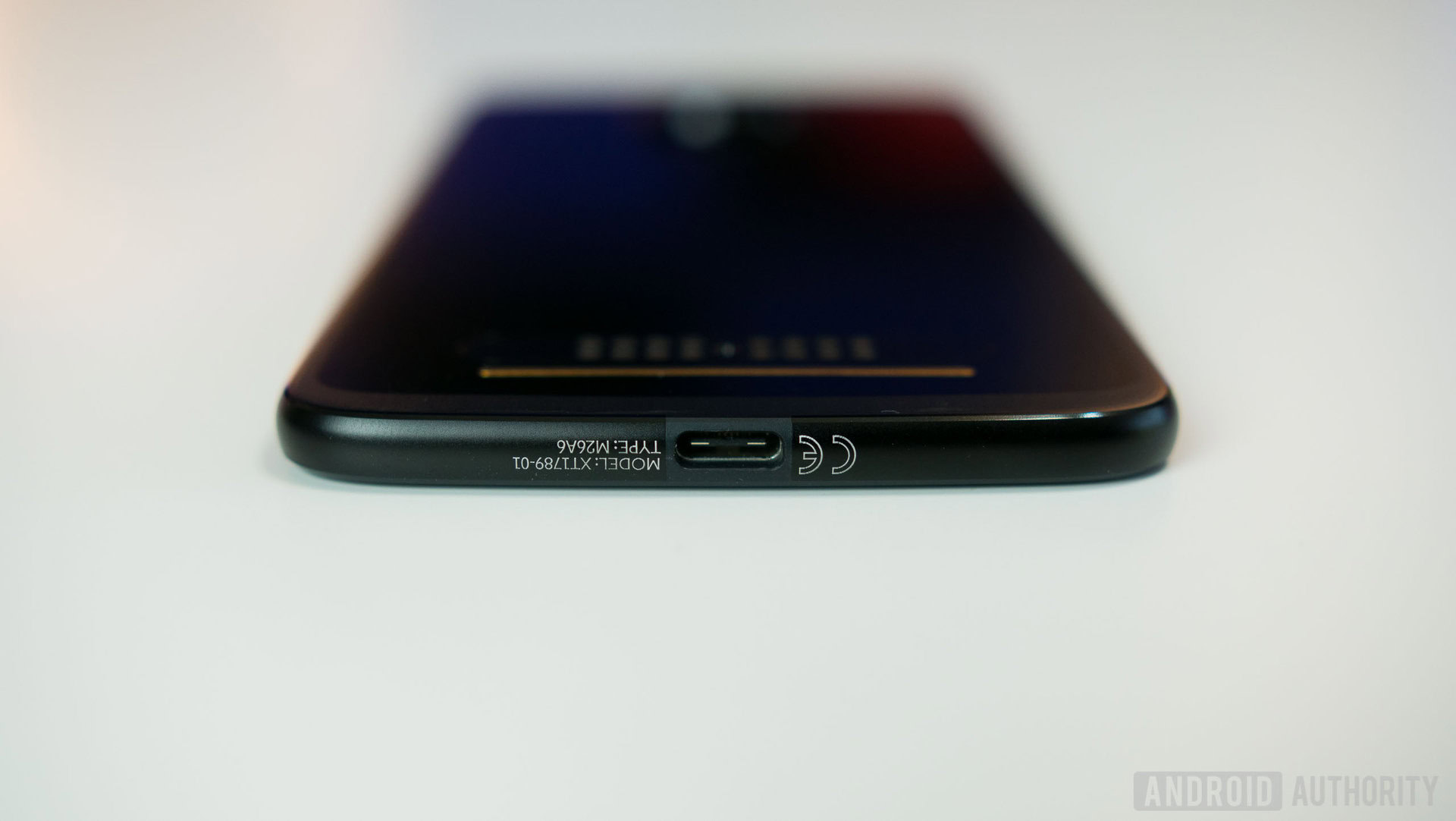
One problem that a Moto Mod can not solve (at least for now) is the Z2 Force’s lack of a headphone jack, which most people might still find annoying. There is a USB type C adapter to 3.5 mm jack included in the box of the Z2 Force so at the very least you are still able to use your favorite pair of earbuds or over the ear cans.
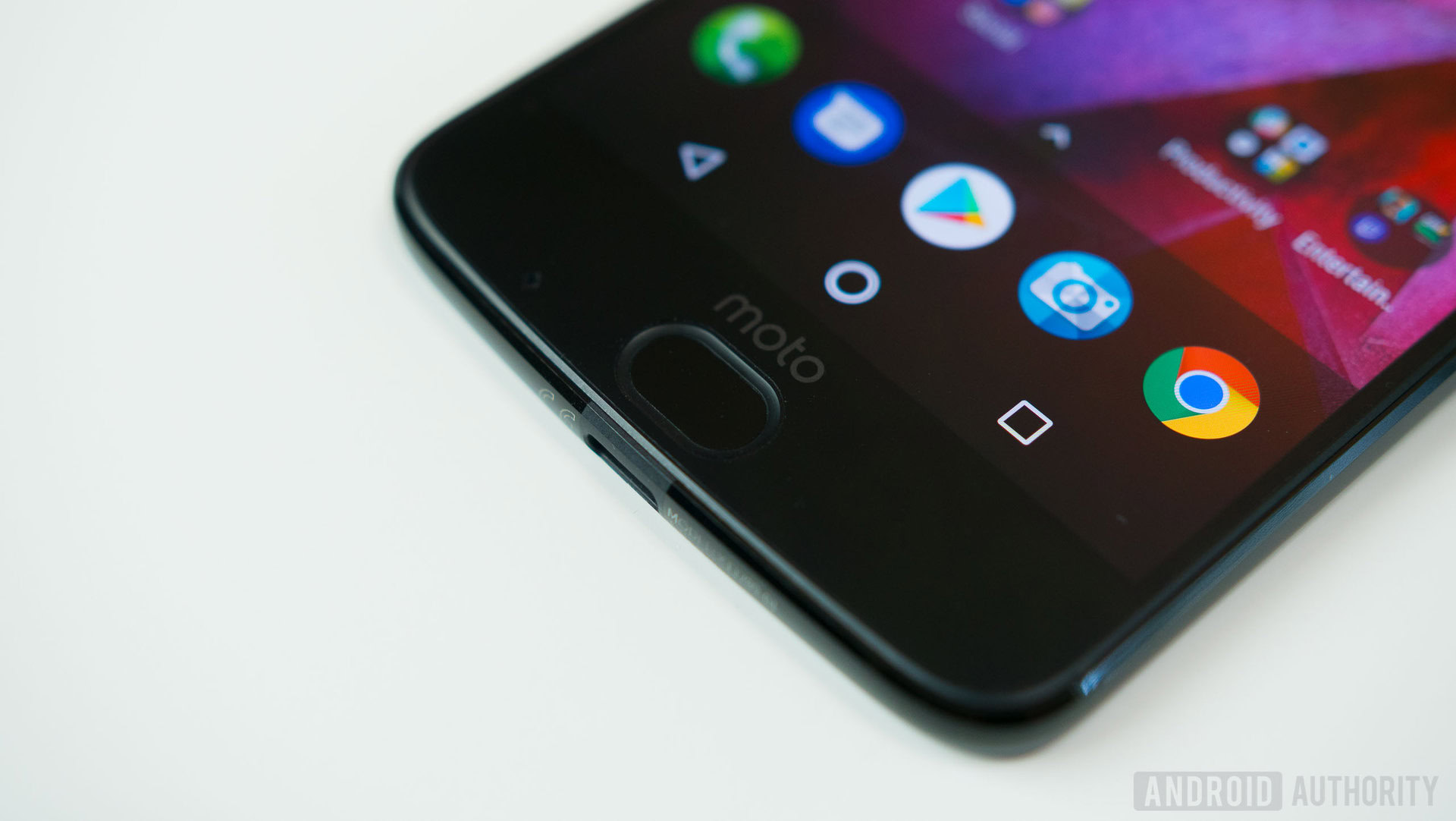
On the bottom chin or directly below the display is where Motorola typically likes to place their fingerprint sensors and the Z2 Force is no exception. Just like the G5 Plus or Z2 Play the fingerprint sensor features the same redesigned oval shape that better matches the design aesthetics of the Moto lineup over the previous squared shape sensor. The fingerprint sensor works well, with great accuracy and speed, and it’s fantastic that it can also be used to put the phone back to sleep. In addition to that, the fingerprint sensor can be used for all of your Android navigation needs in place of the Android soft keys, through various different gestures. This was first introduced on the G5 Plus and it’s a great way to maximize the entire screen of the Z2 Force but using one button for all navigation can take some getting used to.
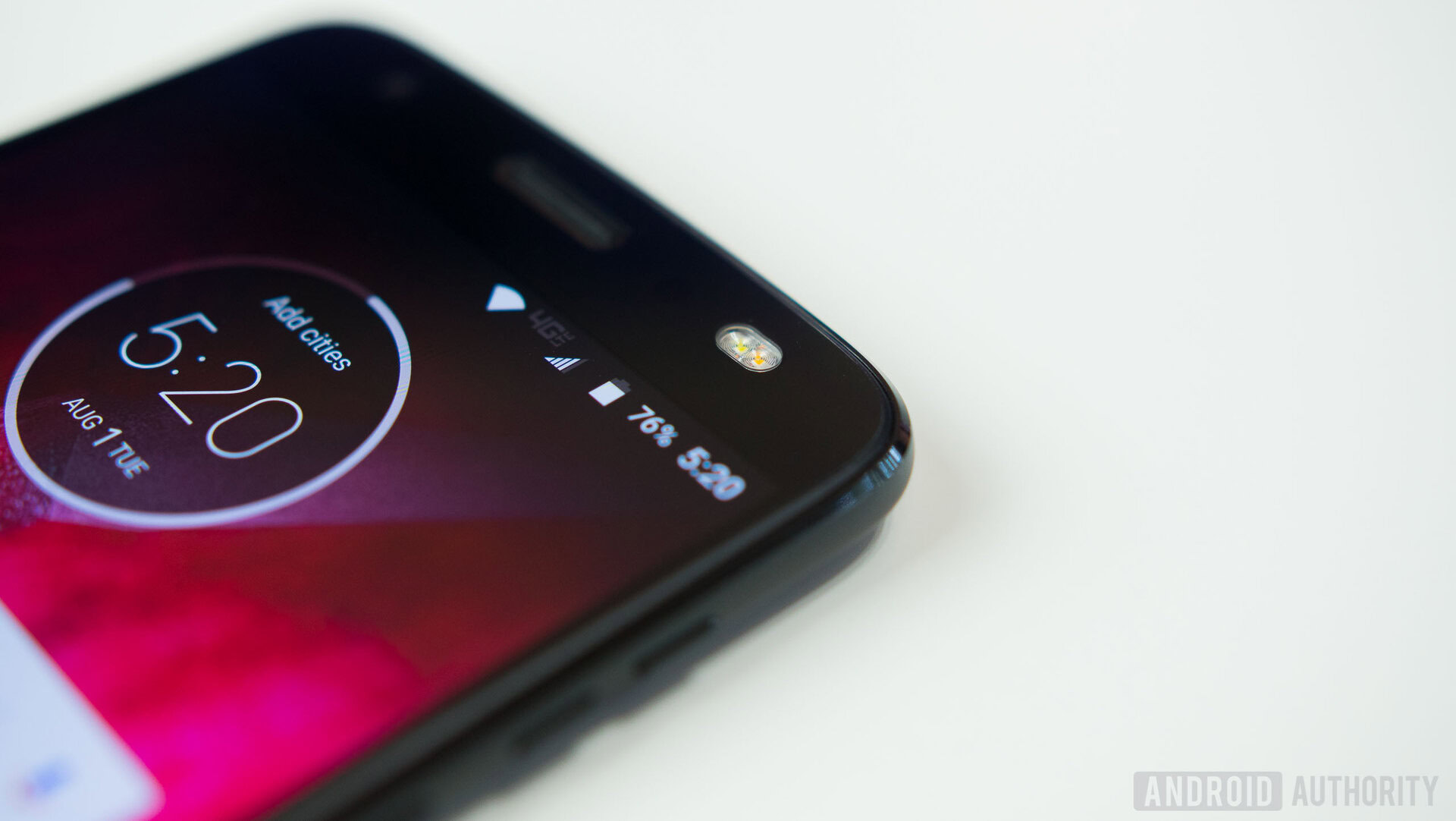
With the Z2 Force being thinner than its predecessor, this resulted in a significantly smaller battery which has been a big point of concern since the phone’s announcement. It’s a move by Lenovo that is quite the head-scratcher, as the drop in battery capacity is drastic. The Z2 Force features a 2,730 mAh battery which is a 22% decrease over the 3,500 mAh cell of last year’s Z Force.
This smaller battery has resulted in less than desirable battery life especially for a flagship. Getting through a full day on the Z2 Force is certainly possible with light usage, but moderate to heavy use will definitely require at least one charge up midway through the day. Screen on-time never went beyond four hours regardless of how heavy or light my usage was and that’s just well below average when compared to most current flagships. Of course the battery pack Moto Mod could make this a non-issue but you shouldn’t have to rely on an extra accessory in order to get great battery life.
Camera
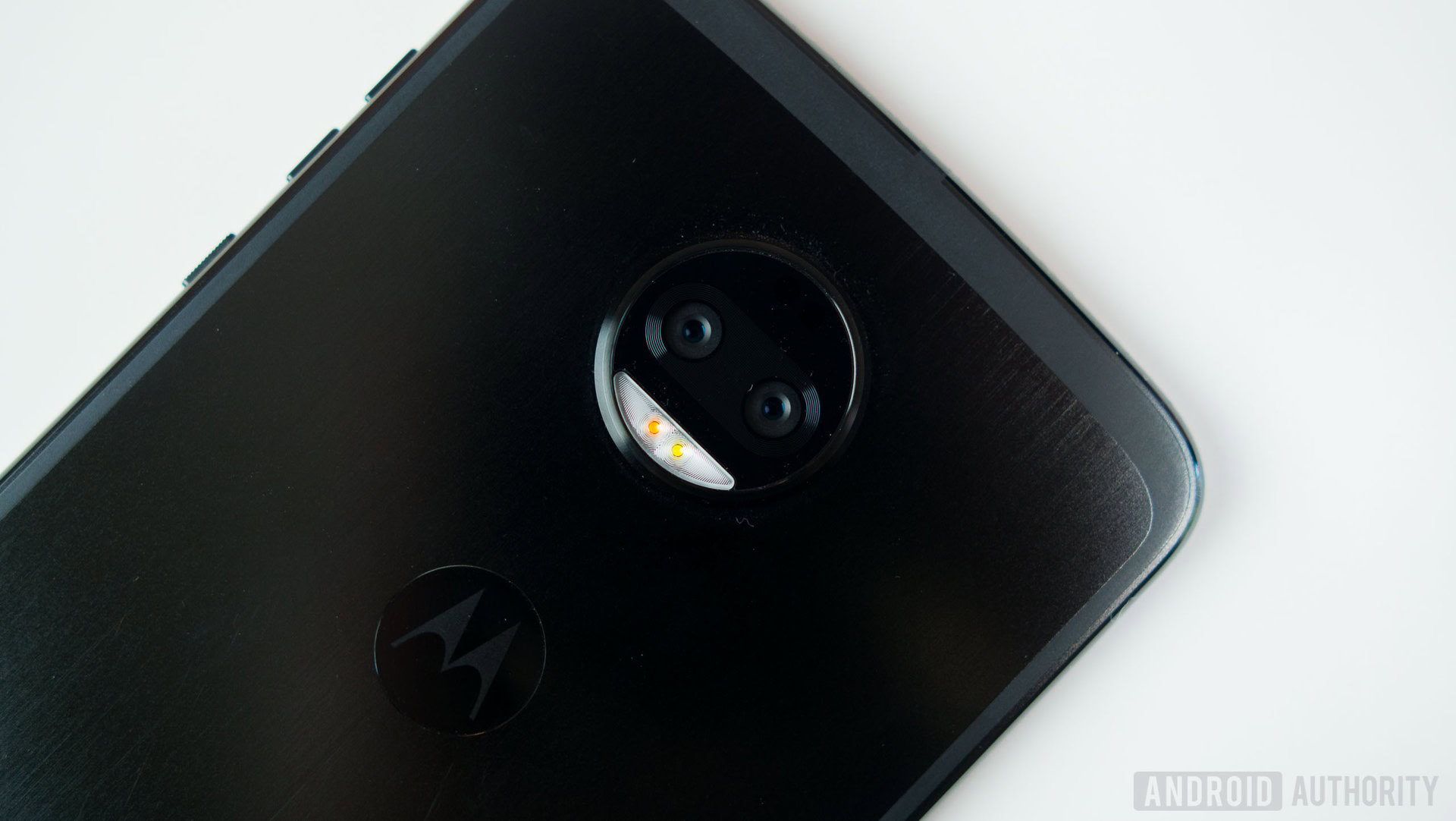
Dual cameras on flagships are becoming the norm and Motorola has become the latest OEM to join the club. The Z2 Force features two 12 megapixel cameras with PDAF and f/2.0 aperture. The main sensor is your standard RGB, while the secondary lens shoots monochrome and this provides the Z2 Force with a few new tricks.
These two cameras combine to create better quality images and the monochrome sensor allows you to take true black and white photos. Motorola also leverages the second sensor with a new depth effect or portrait mode for a blurred background effect similar to the iPhone 7 Plus, OnePlus 5 or HUAWEI P10.
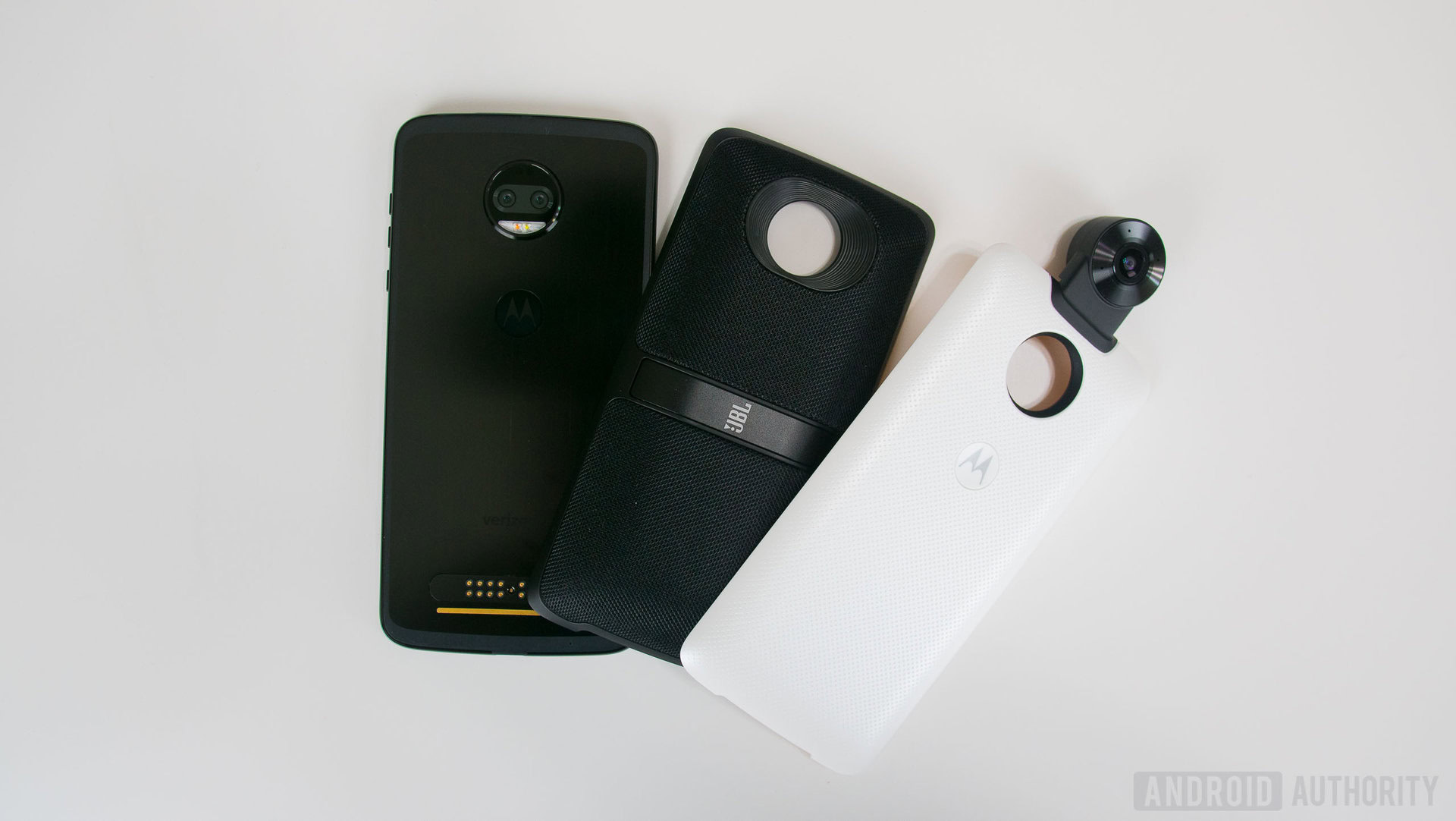
The camera app is largely unchanged from previous Moto devices. The only difference is you now have options for a black and white mode and the new depth effect. For video recording, the Z2 Force can record up to 4K at 30 fps and 1080p slow motion video at 120 fps. Unfortunately, without optical image stabilization video footage isn’t very smooth and shakes and jitters can be easily noticed even from the casual walk.
Black and white photography doesn’t necessarily appeal to me, but in the right situation in can make your shot look more dramatic. The depth effect or portrait mode on the other hand is no better or worse than what we’ve seen from other smartphones that can do the same thing. It can look convincing in some cases but when the subject has more complex edges, like in the case of flowers or a person’s hair, that’s when it starts to look artificial.
General picture quality on the Z2 Force has been pleasant. Color reproduction is nice and accurate with just a tad amount of saturation to make the images pop. There’s plenty of detail in daytime photography and the camera handles shadows and highlights fairly well leading to overall good dynamic range. In low light is where the camera struggles the most. The lack of OIS means the camera is much slower to capture, resulting in a lot of out of focus shots and a noticeable lack of sharpness and detail.
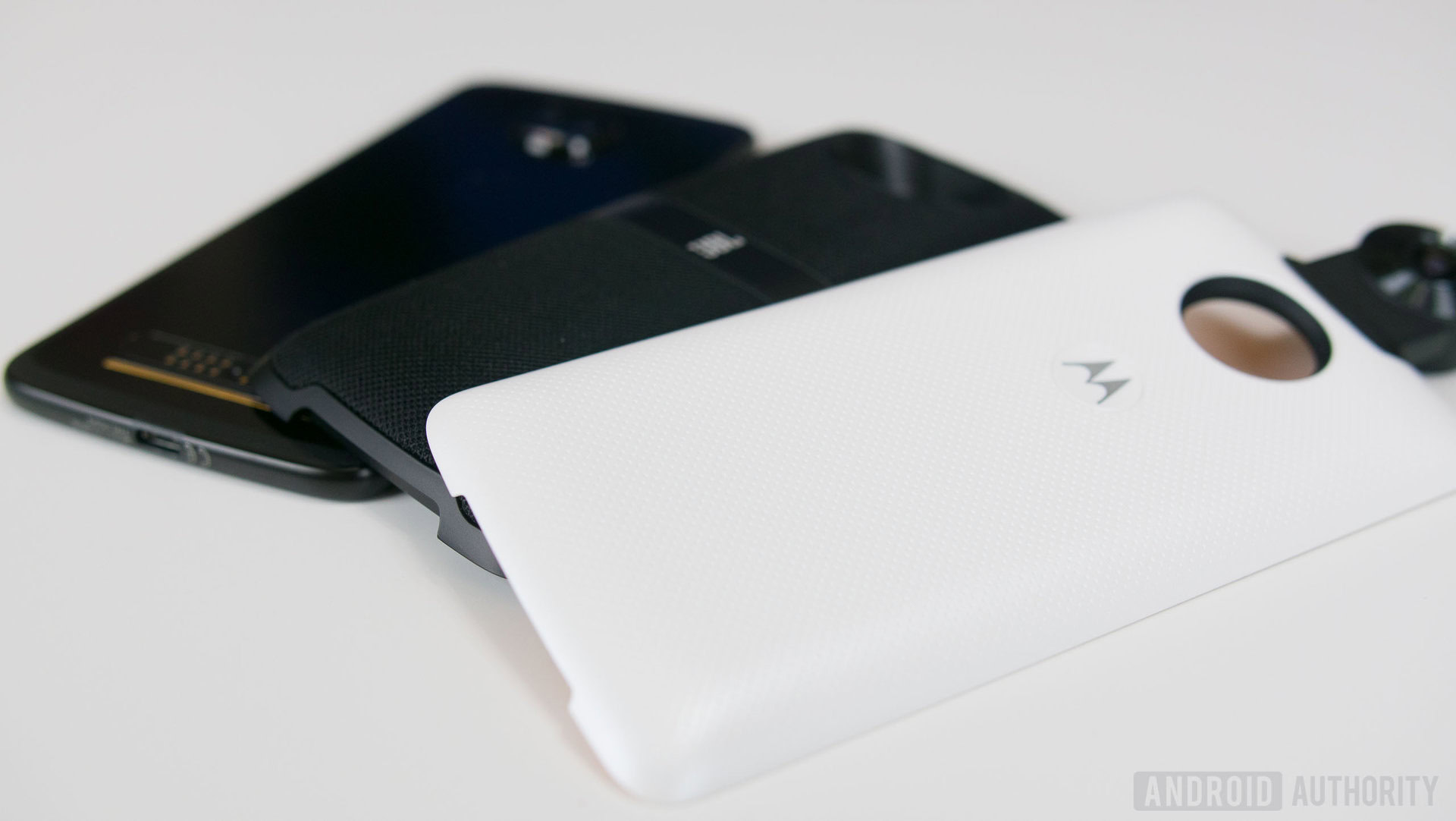
The front facing camera is a 5 megapixel shooter at f/2.2 with a front facing LED flash that’s sufficient for taking selfies. The LED flash is great for illuminating your face in dark situations without being overly harsh but it has a tendency to crush details in the background that you may prefer the results with it turned off.
Software
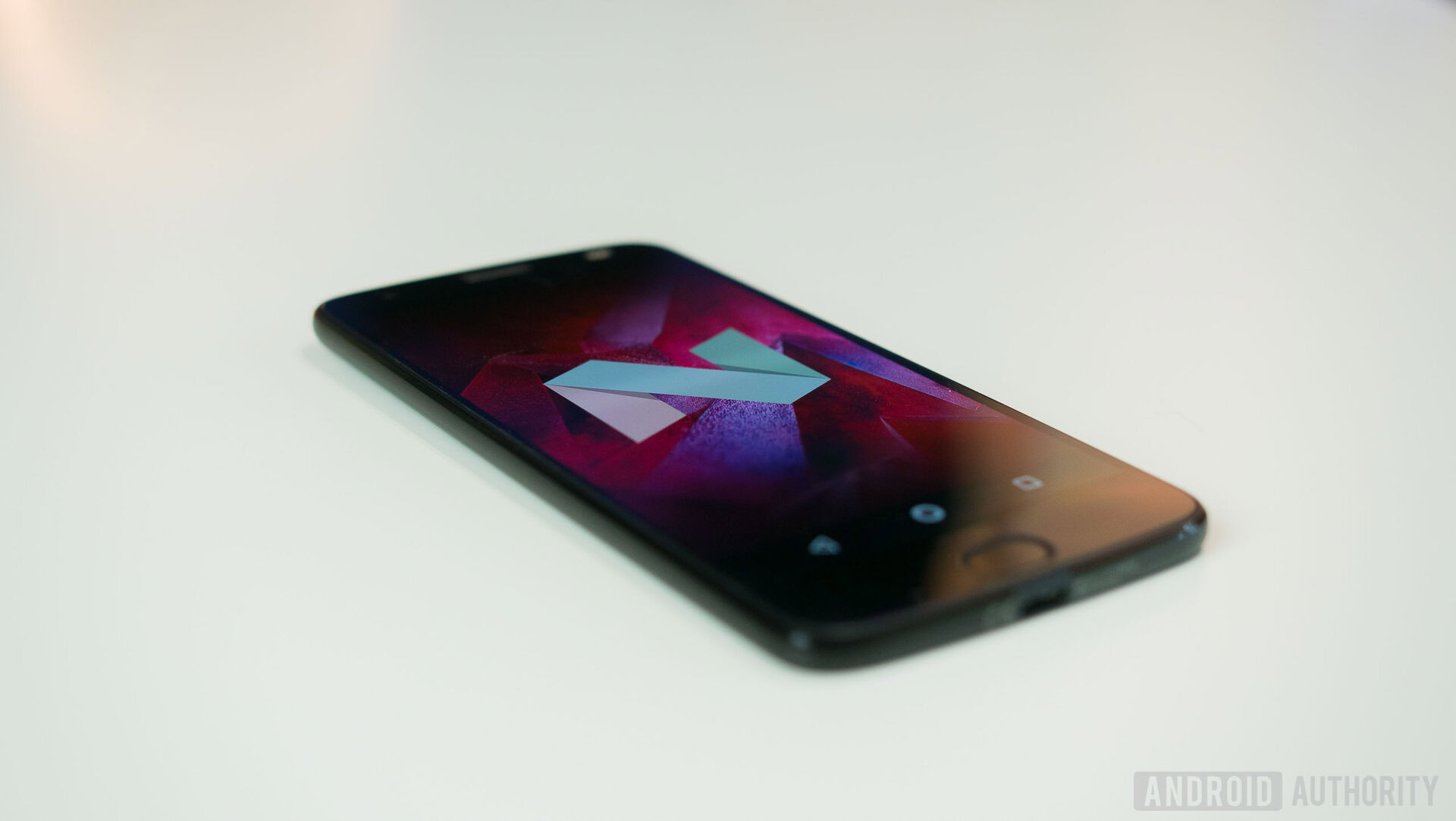
Motorola’s software experience has always been one of the best in Android and the story is no different on the Z2 Force. It’s running Android 7.1.1 and of course what makes the experience so great is how close it is to stock Android. Motorola’s usual suite of useful software additions are also on board, which includes the double chop for turning on the flashlight, wrist twist to launch the camera, and battery friendly notifications with Moto display just to name a few.
It’s the cleanest software experience you’ll find outside of a Pixel or a OnePlus 5 but carrier versions inevitably come with pre-installed bloatware. The amount of bloatware will vary from carrier to carrier but the Verizon version that I’ve been using comes with Verizon’s entire suite of applications and other third party apps like Slacker Radio and NFL Mobile. An unlocked version was briefly available during the phone’s launch, which most likely would have been free of carrier bloat, but that since has been given the axe, and you’re now forced to pick a carrier when buying it direct from Motorola.
Specifications
| Moto Z2 Force | |
|---|---|
Display | 5.5-inch POLED ShatterShield 2560 x 1440 resolution 535 ppi |
Processor | 2.35 GHz octa-core Qualcomm Snapdragon 835 Mobile Platform |
GPU | Adreno 540 |
RAM | 4 GB (U.S.) 6 GB (Rest of world) |
Storage | 64 GB (U.S.) 128 GB (China) |
MicroSD | Yes, up to 2 TB |
Cameras | Rear camera 1: 12 MP IMX 386 color sensor with 1.25µm pixels, f/2.0 aperture, PDAF, laser-assisted autofocus Rear camera 2: 12 MP IMX 386 monochrome sensor with 1.25µm pixels, f/2.0 aperture, PDAF, laser-assisted autofocus Front: 5 MP sensor with an f/2.2 aperture, 85-degree wide-angle lens, dual-tone flash |
SIM | Nano-SIM Dual-SIM available in certain countries |
Networks | US Verizon+USC: 4G LTE (B1, 2, 3, 4, 5, 7, 8, 12, 13, 17, 20, 25, 26, 28, 66) CDMA (BC0, 1) GSM/GPRS/EDGE (850, 900, 1800, 1900 MHz) UMTS/HSPA+ (B1, 2, 5, 8) US Sprint: 4G LTE (B1, 2, 3, 4, 5, 8, 12, 13, 17, 20, 25, 26, 41) CDMA (BC0, 1, 10) GSM/GPRS/EDGE (850, 900, 1800, 1900 MHz) UMTS/HSPA+ (B1, 2, 4, 5, 8) US GSM Unlocked (ATT+TMO): GSM/GPRS/EDGE (850, 900, 1800, 1900 MHz) UMTS/HSPA+ (B1, 2, 4, 5, 8) 4G LTE (B1, 2, 3, 4, 5, 7, 8, 12, 17, 20, 25, 26, 28, 29, 30, 38, 40, 41-Japan & China, 66, 252, 255) |
Connectivity | Bluetooth 4.2, upgrade to Bluetooth 5.0 after Android O update Wi-Fi 802.11 a/b/g/n/ac 2.4 GHz + 5 GHz with MIMO NFC Moto Mods connector USB Type-C port 3.5 mm to USB Type-C headphone port adapter included |
Sensors | Fingerprint Accelerometer Ambient Light Gyroscope Magnetometer Barometer Proximity Ultrasonic Audio monitor |
Battery | 2,730 mAh Non-removable 15W TurboPower |
Water resistance | Water-repellent nano-coating |
Software | Android 7.1.1 Nougat |
Colors | Super Black, Fine Gold, Lunar Grey (T-Mobile only) |
Dimensions and weight | 155.8 x 76 x 6.1 mm 143 g |
Gallery
Pricing and final thoughts
The Moto Z2 Force is available now directly from Motorola and through all U.S. carriers, and for a limited time you can get last year’s Moto Insta-share projector mod included for free. Pricing will vary from carrier to carrier, but directly from Motorola the phone will run you $720 which is already down 80 bucks from the initially announced release price.
With the Z2 Force’s availability on all major U.S. carriers, it’s clear that Motorola/Lenovo is making a big attempt in competing with other big name flagships and it certainly has all the raw power and specs in order to do so. But, in 2017, it takes more than a great spec sheet to grab consumers’ attention. Motorola made a few steps forward in differentiating their product by adding dual cameras and more unique Moto Mods, but they arguably took many more steps back.
There’s still no headphone jack despite the more mid-range Z2 Play carrying one, the Z2 Force is not water resistant like most flagships, and Motorola sacrificed the phone’s once hefty battery in favor of a thinner design. All of these are questionable decisions that prevents the Z2 Force from being an even better phone. There’s no doubt that the Z2 Force is a good phone, but it had the potential to be a great phone and when you’re pricing your phone to compete with the best, “good” just isn’t enough.